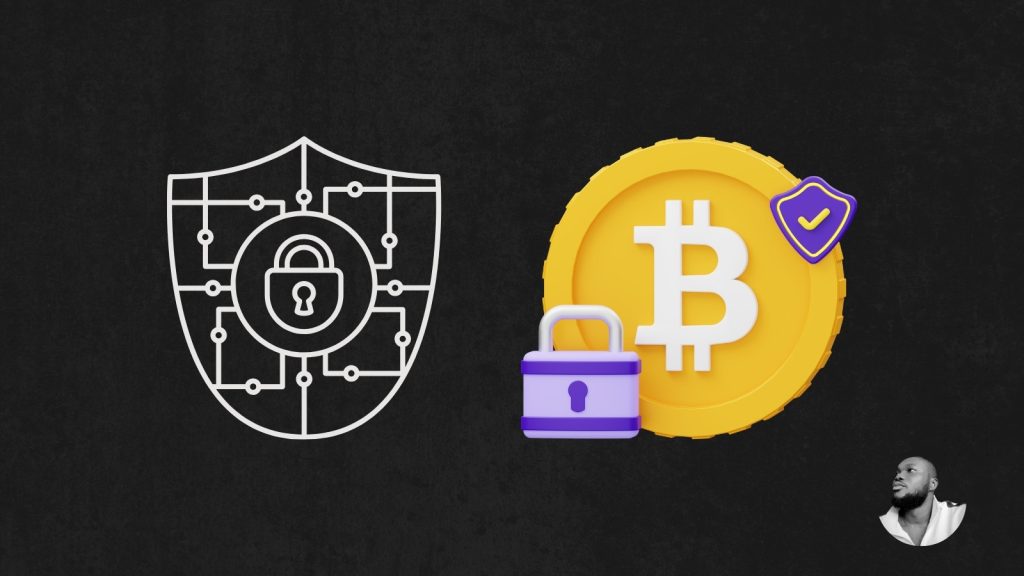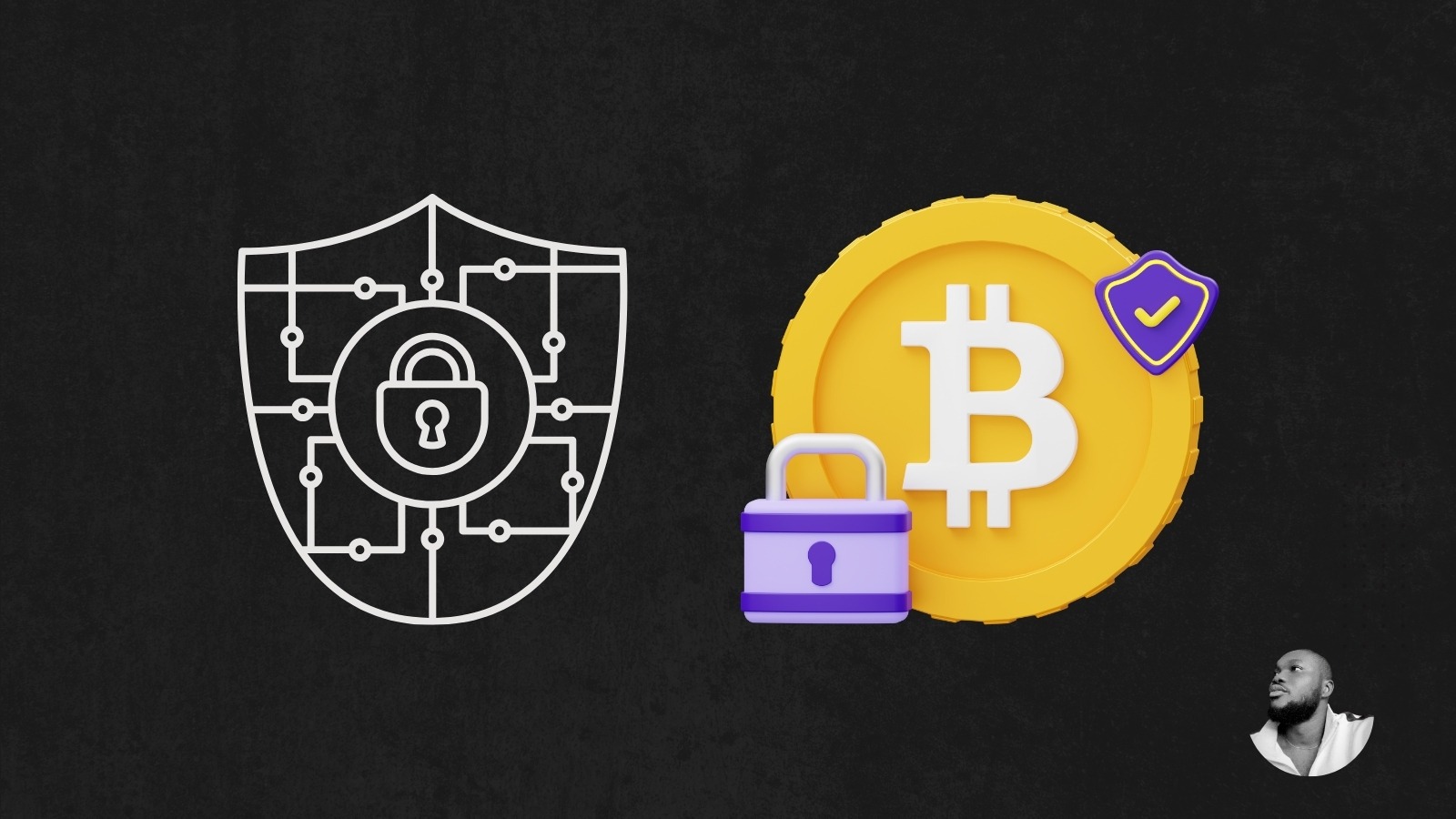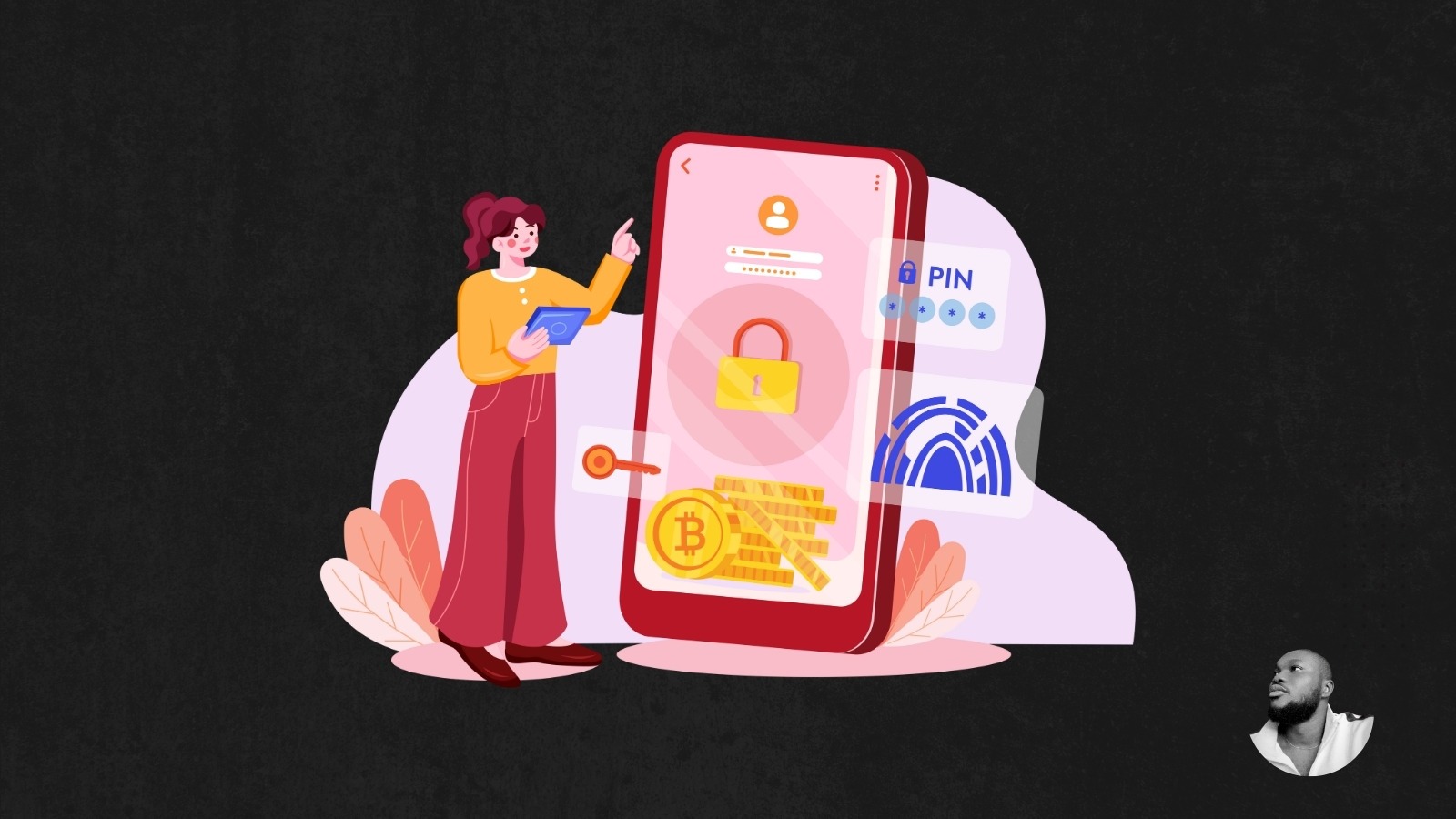Crypto Security 101: Best Practices to Safeguard Your Investments
Cryptocurrency has transformed the financial landscape, providing new opportunities for investment, wealth creation, and decentralization. However, with these exciting opportunities come significant risks, especially when it comes to safeguarding your digital assets. Crypto investors, whether beginners or seasoned veterans, must recognize the importance of security in the crypto space. The decentralized nature of cryptocurrencies gives investors control over their assets, but it also means that there’s no central authority to turn to in case of theft or loss.
This Crypto Security 101 guide will take you through the essential best practices to protect your investments. By following these steps, you can safeguard your assets from common threats like hacking, phishing, scams, and ransomware. Remember, securing your investments is not just a one-time task but an ongoing process of vigilance and learning.
Understanding the Risks in Cryptocurrency
Before diving into the best practices, it’s essential to understand the specific risks inherent in the cryptocurrency world. Unlike traditional financial systems, where intermediaries like banks and insurance companies protect your assets, cryptocurrency is decentralized, meaning the responsibility for security falls primarily on the individual investor. This makes understanding the landscape of crypto threats a fundamental first step.
The Landscape of Crypto Threats
Cryptocurrencies, being digital and decentralized, are attractive targets for cybercriminals. The following are some of the most common threats that crypto investors face:
- Hacking: Hackers frequently target cryptocurrency exchanges, wallets, and individual accounts. Since cryptocurrencies are stored in digital wallets and transferred over blockchain networks, these are often vulnerable to breaches. A compromised wallet can lead to the irreversible loss of funds.
- Phishing: Phishing schemes are designed to trick users into revealing sensitive information such as private keys or login credentials. This is typically done through fraudulent emails, websites, or messages that appear to be legitimate.
- Ransomware: This is malicious software that locks users out of their devices or encrypts their files until a ransom is paid, often demanded in cryptocurrency. The decentralized and pseudonymous nature of cryptocurrencies makes them appealing to cybercriminals seeking ransoms.
- Scams and Fraud: Ponzi schemes, fake initial coin offerings (ICOs), and investment scams are rampant in the crypto space. Fraudulent projects lure investors with promises of high returns and then disappear with their funds.
These risks are not hypothetical—millions of dollars are lost every year to cryptocurrency-related crimes. In 2021 alone, it was reported by Chainalysis that over $14 billion worth of cryptocurrency was stolen, underlining the need for every investor to implement strong security measures.
Case Study: The Mt. Gox Incident
One of the most significant events in the history of cryptocurrency security is the collapse of Mt. Gox, once the largest Bitcoin exchange. In 2014, the Tokyo-based exchange suffered a catastrophic security breach, losing approximately 850,000 Bitcoins, valued at around $450 million at the time. The breach was due to inadequate security protocols, and it led to the eventual collapse of the company.

The Mt. Gox incident serves as a stark reminder of how important robust security measures are in the cryptocurrency world. Investors who stored their Bitcoin on the exchange lost access to their funds permanently. This event also marked the beginning of greater scrutiny on the security measures implemented by crypto exchanges.
Best Practices for Securing Your Cryptocurrency Investments
As an investor, securing your cryptocurrency investments is paramount. Here are the key best practices that every investor, from beginners to seasoned traders, should follow.
1. Use Hardware Wallets: The Foundation of Crypto Security
What is a Hardware Wallet?
A hardware wallet is a physical device that securely stores your cryptocurrency private keys offline. Unlike software wallets that are stored on your computer or mobile device, hardware wallets are not connected to the internet, which significantly reduces the risk of hacking. These devices often come with a PIN code and recovery seed, adding extra layers of protection.
The primary purpose of a hardware wallet is to keep your private keys offline, making them immune to online attacks such as phishing or malware. Without access to your private keys, hackers cannot transfer your funds. Even if your computer is compromised, a hardware wallet ensures that your assets remain secure.
Why You Should Use a Hardware Wallet
Using a hardware wallet is one of the most effective ways to secure your crypto assets. If you’re planning to hold cryptocurrencies for the long term or manage significant sums, investing in a hardware wallet should be a top priority. Unlike exchanges or software wallets, which can be compromised if hacked, hardware wallets are considered “cold storage” and offer much greater protection.
Recommended Hardware Wallets
Here are some of the most trusted hardware wallets on the market:
- Ledger Nano X: One of the most popular hardware wallets, it offers Bluetooth connectivity, supports multiple cryptocurrencies, and features a secure chip to protect your assets. You can buy from the link enclosed.
- Trezor Model T: Known for its robust security features, the Trezor Model T has a touchscreen interface and supports a wide variety of cryptocurrencies.
- Coldcard Wallet: Specifically designed for Bitcoin, Coldcard is an open-source wallet that offers superior security and privacy features.
2. Enable Two-Factor Authentication (2FA): Layering Your Security
What is Two-Factor Authentication (2FA)?
Two-factor authentication (2FA) is an additional layer of security that requires not only a password and username but also something that only the user has on them. This could be a code sent to your mobile phone or generated by an authentication app like Google Authenticator or Authy.
Why You Need 2FA
2FA helps protect your accounts by making it much harder for unauthorized users to gain access. Even if someone has stolen your password, they won’t be able to log in unless they also have access to your second factor, such as a mobile phone or hardware token.
How to Set Up 2FA
Setting up 2FA is straightforward. Follow these steps:
- Choose a Reliable 2FA App: Some popular choices include Google Authenticator, Authy, and Duo Mobile. These apps generate time-sensitive codes that you will use for logging in to your accounts.
- Enable 2FA on All Your Accounts: Make sure to enable 2FA on all cryptocurrency exchanges, wallets, and email accounts that support it. Many crypto exchanges, like Binance and Coinbase, offer 2FA for added security.
- Store Backup Codes: When setting up 2FA, you will be provided with backup codes. Store these in a secure location because if you lose access to your device, you’ll need the backup codes to regain access to your account.
3. Regular Software Updates: Staying One Step Ahead of Hackers
Importance of Software Updates
Hackers constantly exploit vulnerabilities in software. Regularly updating your software ensures that your systems have the latest security patches and are better equipped to withstand potential attacks. This applies to your wallet apps, exchanges, and even your operating system and antivirus programs.
How to Keep Your Software Up to Date
- Enable Automatic Updates: Whenever possible, enable automatic updates for your wallets, exchanges, and operating systems. This ensures that you get the latest security patches as soon as they are available.
- Regularly Check for Updates: In case automatic updates are not available, make it a habit to regularly check for software updates. This applies to everything from your wallet to your browser and antivirus software.
- Be Cautious with Third-Party Apps: Avoid downloading third-party apps or software unless they come from a reputable source. Malicious software is often distributed via seemingly innocent third-party applications.
4. Be Wary of Phishing Attacks: Don’t Fall for the Trap
What is Phishing?
Phishing is a technique used by cybercriminals to trick you into revealing sensitive information like passwords, private keys, or other personal data. Phishing attacks often come in the form of emails or websites that appear legitimate but are actually fraudulent.
How to Recognize Phishing Attempts
Phishing attacks are increasingly sophisticated, but there are some common signs to watch out for:
- Suspicious Emails or Messages: Be cautious of unsolicited emails, especially those that ask you to log in to your cryptocurrency account or provide personal information. Always verify the sender’s address.
- Lookalike Websites: Scammers often create fake websites that look almost identical to real ones, such as crypto exchanges or wallet providers. Always ensure you are on the correct website by carefully checking the URL. Bookmark the URLs of your most-used crypto exchanges and wallets.
- Fake Customer Support Scams: Beware of fake customer support teams that contact you via social media or email, asking for your private keys or passwords. Legitimate companies will never ask for this information.
Tips to Avoid Phishing
- Avoid Clicking on Links in Unsolicited Emails: Never click on the link directly if you receive an email from a crypto exchange or wallet provider. Instead, go to the website through your browser’s bookmark or by typing the URL manually.
- Use a Password Manager: A password manager can automatically fill in login details for the correct websites, helping to avoid phishing sites.
- Verify Communications: If you’re unsure whether an email or message is legitimate, contact the company directly through official channels before taking any action.
5. Use Strong, Unique Passwords: Your First Line of Defense
The Importance of Strong Passwords
A strong password is the first and most essential line of defence against unauthorized access to your accounts. Weak or easily guessable passwords can leave your accounts vulnerable to hacking attempts, which is especially dangerous in the world of cryptocurrency where stolen funds are almost impossible to recover.
How to Create Strong Passwords
A strong password should be:
- At least 12 characters long: The longer your password, the harder it is to crack. Aim for at least 12 characters, though 16 or more is even better.
- A combination of uppercase and lowercase letters, numbers, and special characters: Mix up your password with different types of characters to increase its complexity.
- Random, not easily guessable: Avoid using personal information such as your birthday, pet’s name, or simple sequences like “12345” or “password”. Instead, use random combinations that don’t relate to anything specific about you.
- Unique for every account: Never reuse passwords across multiple accounts. If one account is compromised, hackers may try using the same password to access your other accounts.
Password Management
Remembering dozens of complex passwords can be difficult, which is where a password manager comes in handy. A password manager can store all your passwords in a secure, encrypted vault and generate new strong passwords for you.
Popular password managers include:
These tools can also help you easily update your passwords across different accounts and make sure you’re not reusing the same password multiple times.
6. Diversify Your Investments: Spread the Risk
Why Diversification is Important
One of the key principles of any investment strategy is diversification—don’t put all your eggs in one basket. In the context of cryptocurrency, this means not investing all your funds into a single coin or asset. The volatile nature of cryptocurrency markets makes it risky to bet on a single asset.
If one cryptocurrency crashes or a security breach affects a particular platform, you could lose everything if you haven’t diversified your holdings. By spreading your investments across multiple assets, you reduce the risk of losing your entire portfolio.
How to Diversify Your Crypto Portfolio
Here are some strategies to diversify your investments:
- Invest in Multiple Cryptocurrencies: Instead of just holding Bitcoin, consider adding other major cryptocurrencies like Ethereum, Litecoin, or stablecoins like USDC or DAI to your portfolio.
- Explore Emerging Altcoins: Diversifying into smaller, emerging altcoins (alternative cryptocurrencies) can also yield significant returns. However, this comes with increased risk, so it’s important to do thorough research before investing in any new projects.
- Consider Different Asset Classes: In addition to cryptocurrencies, you can invest in other blockchain-based assets like NFTs (non-fungible tokens) or DeFi (decentralized finance) tokens. These are growing sectors within the crypto world and can provide additional diversification.
7. Conduct Regular Security Audits: Stay Vigilant
What is a Security Audit?
A security audit involves reviewing your security practices and identifying any potential vulnerabilities in your setup. This is especially important in the fast-moving world of cryptocurrency, where new threats are constantly emerging.
Conducting a regular security audit ensures that your defences are up to date and that no gaps have developed over time.
Steps for Conducting a Personal Security Audit
- Review Account Security: Check the security settings on all your cryptocurrency exchange and wallet accounts. Make sure two-factor authentication is enabled and that your passwords are up-to-date and strong.
- Check for Unauthorized Transactions: Regularly monitor your accounts for any suspicious or unauthorized activity. If you notice any unusual transactions, take immediate action by contacting the platform and securing your account.
- Update Security Practices: As new threats emerge, update your security practices accordingly. This could mean adding a new layer of security, like a hardware wallet, or changing your passwords more frequently.
- Backup Your Wallets: Make sure you have backed up the necessary information to recover your wallets in case of loss or damage. This includes securely storing your wallet’s recovery phrase or seed phrase in a safe, offline location.
8. Stay Informed and Educate Yourself: Knowledge is Power
The Importance of Continuous Learning
The cryptocurrency landscape is constantly evolving, and staying informed is critical for maintaining your security. New threats, hacks, and scams emerge regularly, so keeping up to date on the latest developments will help you stay one step ahead.
How to Stay Informed
- Follow Reputable Crypto News Websites: Websites like Bitrabo, CoinDesk, CoinTelegraph, and The Block provide the latest news on crypto developments, including security breaches, exchange updates, and regulatory changes.
- Join Crypto Communities: Engaging with other crypto enthusiasts in forums like Reddit’s /r/Cryptocurrency or Telegram groups can help you stay in the loop. Bitrabo also has a Web3 community for crypto activities. These communities often discuss the latest trends, news, and potential security issues.
- Attend Webinars and Conferences: Many crypto organizations and companies host webinars, conferences, and online courses focused on crypto security. Attending these events is a great way to learn from experts and deepen your understanding of crypto security best practices.
The Role of Exchanges in Crypto Security
While it’s crucial to take personal responsibility for securing your cryptocurrency, the exchanges and platforms where you buy, sell, and trade crypto also play a significant role in protecting your assets.
Choosing a Secure Exchange
When choosing a cryptocurrency exchange, it’s important to consider its security features, reputation, and regulatory compliance. A secure exchange can provide an added layer of protection, but remember that ultimately, your security depends on your practices.
What to Look for in a Secure Exchange
- Regulation and Compliance: Choose an exchange that complies with local regulations and has strong security protocols. A regulated exchange is more likely to follow best practices in safeguarding user funds.
- Two-Factor Authentication (2FA): Ensure the exchange supports 2FA to add an extra layer of security to your account.
- Cold Storage: The best exchanges store the majority of users’ funds in cold wallets—wallets that are not connected to the internet and are therefore less vulnerable to hacking.
- Insurance: Some exchanges offer insurance to cover losses in the event of a security breach. While insurance won’t recover your funds in every case, it’s a good sign that the exchange takes security seriously.
- Reputation and Track Record: Research the exchange’s history to see if it has experienced any security breaches or negative incidents in the past. User reviews and online forums can provide valuable insights into the exchange’s reliability.
Case Study: Binance Security Measures
Binance, one of the largest and most reputable cryptocurrency exchanges in the world, has implemented several security measures to protect its users. These include:
- Secure Asset Fund for Users (SAFU): Binance maintains an emergency fund called the Secure Asset Fund for Users (SAFU), which is used to compensate users in the event of a security breach.
- Regular Security Audits: Binance conducts regular security audits to identify and address potential vulnerabilities in its platform.
- Advanced Anti-Phishing Protection: Binance offers users the option to enable anti-phishing codes for emails, helping users distinguish legitimate emails from phishing attempts.
- The Importance of Personal Responsibility
While exchanges and wallets can provide robust security features, the ultimate responsibility for securing your cryptocurrency lies with you. Investors must take an active role in protecting their assets by implementing best practices and staying vigilant.
Developing a Security Mindset
Developing a security mindset is crucial in the world of cryptocurrency. This means always questioning the legitimacy of communications, double-checking your security settings, and constantly improving your security practices.
- Be Skeptical: If something seems too good to be true, it probably is. Be wary of any offers or investments that promise guaranteed returns or require you to reveal sensitive information.
- Stay Organized: Keep track of your wallets, private keys, and security settings. Staying organized will help you quickly spot any potential issues before they become bigger problems.
- Learn and Share: Continuously educate yourself about security best practices and share this knowledge with others in the crypto community. By working together, the community can promote a culture of security and help reduce the risk of scams and hacks.
Conclusion
In the crypto space, security is not something to be taken lightly. Whether you’re a seasoned trader or a beginner investor, implementing robust security practices is crucial to safeguarding your investments.
By using hardware wallets, enabling two-factor authentication, staying vigilant against phishing attacks, and keeping your software updated, you can significantly reduce your risk of losing your assets to cyber criminals. Remember, cryptocurrency security is an ongoing process that requires regular audits, updates, and continuous learning.
Key Takeaways
- Invest in Hardware Wallets: Keep your assets offline in a hardware wallet for maximum security.
- Enable 2FA: Add an extra layer of protection to all your crypto accounts.
- Stay Updated: Regularly update your software to protect against new vulnerabilities.
- Be Wary of Phishing: Always verify communications and avoid clicking on suspicious links.
- Diversify Your Investments: Spread your risk across different assets to minimize potential losses.
- Educate Yourself: Stay informed about the latest security practices and threats.
By following these guidelines, you can navigate the world of cryptocurrency with confidence and security.
Disclaimer:
The information provided in this article is for educational and informational purposes only. It should not be considered financial or investment advice. Cryptocurrency investments come with significant risks, including the potential loss of funds due to cyberattacks, market volatility, and regulatory changes. Always conduct thorough research, consult with a financial advisor, and exercise caution when investing in cryptocurrencies or using related services like wallets or exchanges. The security practices mentioned in this article are general recommendations and may not guarantee complete protection from all threats. Use your discretion and stay informed about the latest developments in crypto security.
The Crypto Watchlist of the Week 🔎
Subscribe to receive expert-curated projects with real potential—plus trends, risks, and insights that matter. Get handpicked crypto projects, deep analysis & market updates delivered to you.




